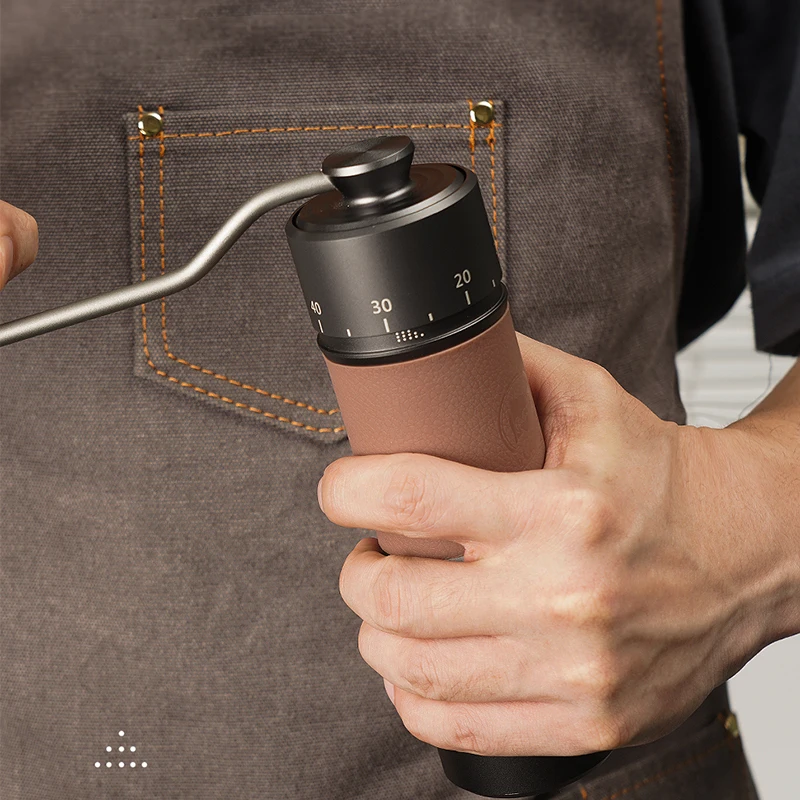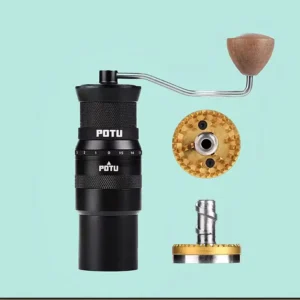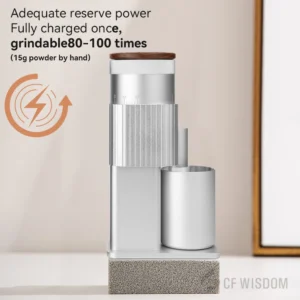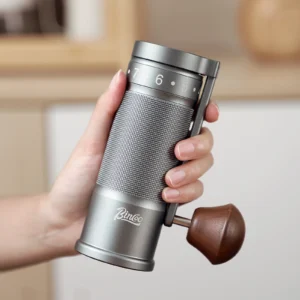Introduction: Why Burr Alignment Defines Your Coffee Experience
When it comes to manual coffee grinders, burr alignment represents the fundamental principle that separates exceptional brewing experiences from mediocre ones. Burr alignment refers to two critical aspects: parallelism (where burrs remain perfectly level with each other) and concentricity (where the rotating burr spins perfectly centered around the stationary burr). When properly aligned, these components maintain a uniform gap between burrs at any grind setting you choose.
This precision directly translates to what matters most in your cup – uniform particle size distribution. When particles are consistent, water extracts flavors evenly from each ground, producing balanced, clean-tasting coffee. Poor alignment, on the other hand, creates both overly fine particles that cause bitterness and large chunks that contribute sourness, resulting in muddled flavors that mask the bean’s true character.
The mastering grind consistency in hand burrs begins with understanding that alignment isn’t just a technical specification—it’s the foundation of flavor clarity. Superior alignment creates a repeatable, predictable grinding experience that allows you to fully explore the nuances of different coffee origins and roast levels without equipment limitations interfering with your results.
The critical impact of burr alignment on coffee quality cannot be overstated. This single aspect of grinder design affects every cup you brew, determining whether the complexity and character of specialty coffee beans translate fully into your daily ritual.
The Foundation: Central Shaft & Bearing Systems
At the literal and figurative core of any premium hand grinder lies the central shaft—the backbone supporting proper burr alignment. This seemingly simple component carries tremendous responsibility, as even minor imperfections here amplify into significant alignment issues.
The Central Shaft: Material and Construction Matter
The central shaft’s material composition directly impacts grinding stability. High-quality grinders typically feature shafts machined from hardened stainless steel rather than standard steel or aluminum for several key reasons:
- Resistance to bending under pressure during grinding
- Protection against corrosion that could create irregularities
- Superior dimensional stability across temperature changes
Shaft diameter plays a critical role as well. While budget grinders might employ 6mm shafts, premium models often utilize 8-10mm diameters that provide substantially greater rigidity and resistance to flex when pressure is applied during grinding.
Bearing Systems: The Unsung Heroes
Perhaps no components are more overlooked yet crucial than the bearings supporting the central shaft. These precision elements ensure the shaft maintains perfect perpendicularity to the burrs throughout its rotation:
- Single vs. Multiple Bearings: Basic grinders use a single bearing point, while premium models employ dual or triple bearing systems for maximum stability.
- Bearing Quality and Type: Ceramic or stainless steel ball bearings provide smoother operation and greater longevity than basic metal bushings.
- Strategic Placement: Top-tier designs position bearings at both ends of the shaft to eliminate wobble from any angle.
This comprehensive bearing support system prevents lateral movement and ensures the rotating burr maintains perfect concentricity relative to the stationary burr—eliminating the inconsistent spacing that creates unpredictable particle sizes.
Examining our precision manual grinder collection reveals how these foundational elements are prioritized by premium manufacturers who understand their coffee-defining importance.
Manufacturing Precision: Tolerances & Component Fit
The invisible yet defining difference between ordinary and exceptional hand grinders lies in manufacturing precision. When components are machined to exacting standards, the cumulative effect transforms grinding performance.
The Power of Tight Tolerances
Premium hand grinders are manufactured with tolerances measured in hundredths of a millimeter (typically 0.01-0.02mm). This extraordinary precision means:
- Components fit together with virtually no play or movement
- Bearings seat perfectly in their housing without shifting
- Burrs maintain consistent positioning throughout operation
These tolerances are achieved through advanced CNC (Computer Numerical Control) machining—an automated manufacturing process where cutting tools follow precise computer instructions. Unlike mass production methods, each component receives individual attention to ensure dimensional accuracy.
The Elimination of “Play”
“Play” refers to unwanted movement between components that should remain fixed relative to each other. Even slight play in bearing housings or shaft connections can allow burrs to shift during grinding, instantly compromising alignment. Premium grinders minimize play through:
- Press-fit components with interference tolerances
- Precision-machined threads that lock components securely
- Carefully calibrated assembly processes
This exacting approach creates a grinder where every turn of the handle translates to consistent burr movement without wobble, flexing, or shifting—a direct contrast to budget models where loose-fitting components create perceptible movement during grinding.
The achieving uniform grind with manual burrs depends significantly on these invisible manufacturing standards that most users never see but immediately experience in their coffee’s taste profile.
Material Selection: Ensuring Structural Integrity
The materials used throughout a hand grinder play a crucial role in maintaining alignment under the physical stresses of grinding. Different materials flex, expand, and wear at different rates—all factors that can impact alignment stability both immediately and over years of use.
Body Materials and Structural Rigidity
Premium hand grinders typically feature bodies constructed from:
- Aircraft-grade aluminum alloys: Offering excellent strength-to-weight ratio with sufficient rigidity
- Stainless steel: Providing maximum stability and resistance to flex, though with added weight
- Zinc alloys: Combining durability with good vibration dampening characteristics
These materials maintain their structural integrity even when significant pressure is applied during grinding, unlike plastic or thin metal housings that may flex subtly and introduce alignment inconsistencies.
Temperature Stability Considerations
Coffee grinders experience temperature fluctuations both from ambient conditions and friction during use. Materials that maintain dimensional stability across temperature ranges help preserve alignment precision. Premium models address this through:
- Materials with similar thermal expansion coefficients throughout the grinder
- Heat-treated components that resist warping or distortion
- Strategic material placement to isolate heat-sensitive alignment components
Burr Carrier Material Importance
The burr carrier—the component that holds the burr in position—deserves special attention. In quality grinders, these carriers are typically machined from solid blocks of aluminum or stainless steel rather than cast or stamped metal, ensuring:
- Perfectly flat mounting surfaces for burrs
- Resistance to bending under grinding pressure
- Precise fit with the central shaft system
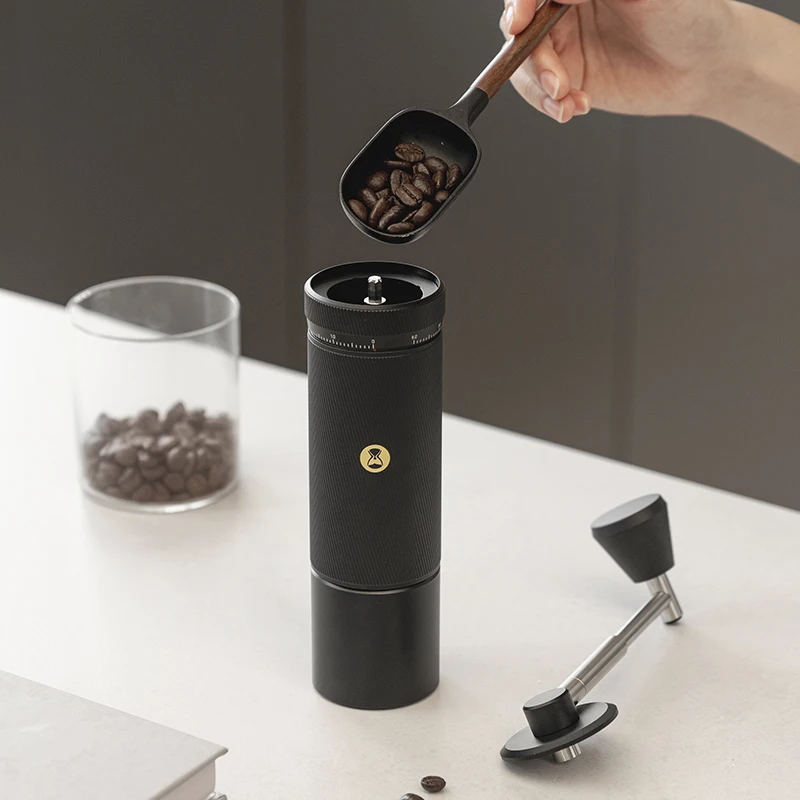
Our selection of all-metal hand grinders demonstrates how premium construction materials contribute to alignment stability and grinding performance. Understanding the differences between metal and plastic hand grinder construction helps coffee enthusiasts make informed choices about long-term performance.
Burr Mounting Systems: Securing Perfect Alignment
The method by which burrs are secured within a hand grinder significantly impacts alignment stability. These mounting systems must hold burrs perfectly in position while withstanding the substantial forces exerted during grinding.
Fixed vs. Rotating Burr Designs
Hand grinders typically employ one of two configurations:
- Fixed inner burr with rotating outer burr: Common in many premium models, this design often provides better stability for the stationary burr
- Fixed outer burr with rotating inner burr: An alternative approach that can offer advantages for certain grind ranges
Each configuration requires specific engineering approaches to maintain alignment, particularly for the rotating burr, which must spin with perfect concentricity despite being in constant motion.
Secure Burr Seating Methods
Premium grinders employ various techniques to hold burrs firmly in place:
- Precision-machined burr seats with exact dimensional matching
- Multiple mounting points that distribute force evenly
- Recessed burr positioning that prevents lateral movement
The most sophisticated designs incorporate rear-secured burrs, where the mounting mechanism is positioned behind the burr rather than through its center. This approach eliminates potential interference with the grinding surface and maintains more consistent alignment.
Cleaning and Reassembly Considerations
An often-overlooked aspect of burr mounting is how the design accommodates regular cleaning without compromising alignment. Superior systems allow for:
- Non-destructive burr removal that preserves factory alignment
- Indexed components that reassemble in only one correct position
- Self-centering mechanisms that guide burrs back to proper alignment
For the most demanding brewing methods, our fine adjustment hand grinder models feature mounting systems specifically designed to maintain perfect burr alignment even after multiple cleaning cycles.
Frame Design: The Skeleton That Supports Alignment
A hand grinder’s frame design serves as the architectural foundation that keeps all components in proper spatial relationship. Different structural approaches offer varying degrees of alignment protection.
Integrated Frame Designs
The most alignment-stable hand grinders feature unibody or integrated frame designs where major structural components are machined from a single piece of metal. This approach:
- Eliminates connection points that could introduce misalignment
- Distributes grinding forces evenly throughout the structure
- Prevents twisting or flexing during operation
These designs often cost significantly more to manufacture but deliver superior alignment stability that remains consistent through years of use.
Advanced Shaft Support Approaches
Some premium grinders implement multiple shaft support systems, sometimes called triple-shaft designs. These architectures incorporate:
- Primary shaft for burr rotation
- Secondary stabilization shafts that prevent lateral movement
- Integrated bearing housings machined directly into the frame
This comprehensive approach creates a grinding environment where the central shaft remains perfectly perpendicular to the burrs regardless of user technique or grinding pressure.
Weight Distribution and Ergonomics
Frame design also impacts how grinding forces are distributed during use. Well-designed frames:
- Balance weight to minimize hand fatigue during extended grinding
- Create natural hand positions that apply force in alignment-preserving ways
- Incorporate vibration-dampening features that protect alignment components
Our curated selection of stainless steel manual coffee grinders showcases how thoughtful frame design contributes to both alignment stability and user experience.
User-Adjustable Alignment Features: Maintaining Perfection
The most sophisticated hand grinders incorporate features that allow users to fine-tune alignment—an acknowledgment that even precision manufacturing has limits and that alignment may need periodic optimization.
Alignment Adjustment Mechanisms
Premium models may include several user-adjustable features:
- Eccentric bearing housings that can be rotated to adjust burr position
- Shim systems allowing precise spacing adjustments
- Set screws that enable fine calibration of component positioning
These mechanisms empower users to maintain factory-level alignment indefinitely, addressing both manufacturing variations and normal wear over time.
When Adjustment Makes Sense
Alignment adjustment typically becomes valuable in several scenarios:
- After extensive use when natural wear may affect original tolerances
- When switching between vastly different grind sizes (espresso to French press)
- Following deep cleaning where components have been fully disassembled
- When experiencing uneven grinding results despite proper technique
Understanding zero hand grinder calibration techniques allows you to maintain optimal performance throughout your grinder’s lifespan, ensuring consistent results cup after cup.
The Tangible Benefits: How Alignment Transforms Your Coffee
The technical features that preserve alignment translate directly into noticeable improvements in your daily coffee experience. These benefits manifest in both the brewing process and the final taste profile.
Grind Consistency Benefits
Properly aligned burrs deliver remarkably consistent particle sizes, which means:
- Even extraction across all coffee grounds
- Reduced channeling in espresso preparation
- More predictable brew times with pour-over methods
- Reliable results when replicating favorite recipes
Flavor Clarity Advantages
The reduction in fines (tiny particles that over-extract quickly) creates:
- Cleaner cup character with less muddy mouthfeel
- More distinct flavor separation between acidity, sweetness, and bitterness
- Enhanced ability to taste origin-specific characteristics
- Reduced astringency and harshness
Versatility Across Brewing Methods
Superior alignment extends a grinder’s effective range:
- Truly usable settings from espresso to cold brew
- Consistent performance across all grind sizes
- The ability to make minor adjustments with predictable results
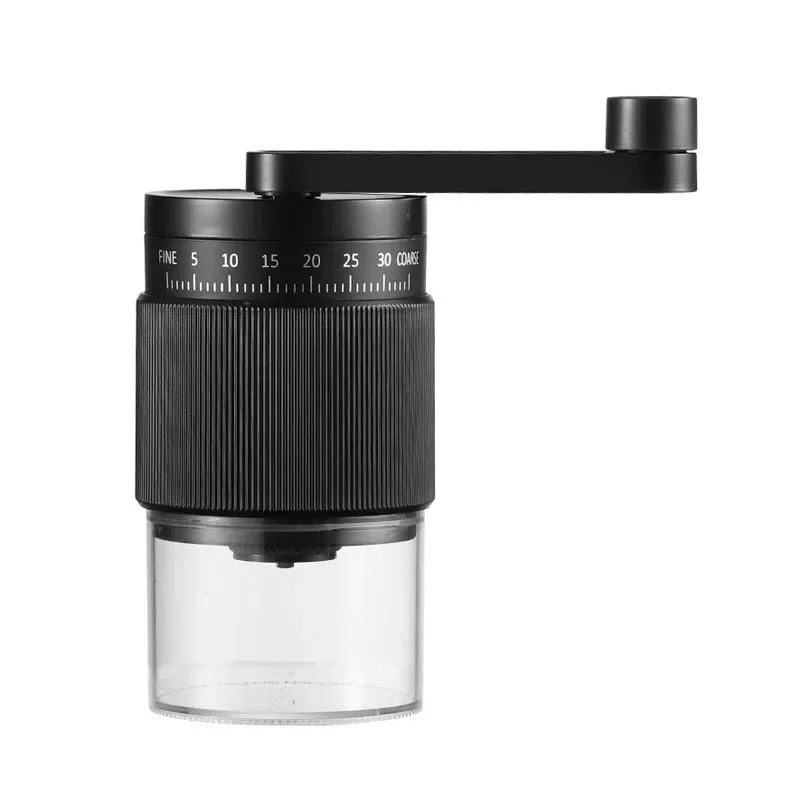
Understanding all factors affecting grind consistency helps coffee enthusiasts maximize their brewing potential and extract the full character from specialty beans.
Fine Adjustment Hand Grinder, Precision Manual Grinder, Travel Coffee Grinder
Price range: $185.11 through $494.63 Select options This product has multiple variants. The options may be chosen on the product pageManual Burr Mill, Manual Coffee Grinder Stainless Steel, Manual Coffee Mill Grinder, Mechanical Coffee Grinder
Price range: $127.26 through $130.32 Select options This product has multiple variants. The options may be chosen on the product pageHand Burr Grinder, Manual Coffee Grinder Stainless Steel, Precision Manual Grinder
Price range: $183.64 through $187.52 Select options This product has multiple variants. The options may be chosen on the product pageHand Crank Coffee Grinder, Manual Burr Mill, Manual Coffee Bean Grinder
Price range: $2,053.84 through $2,918.42 Select options This product has multiple variants. The options may be chosen on the product page
Signs of Alignment Issues: Recognizing the Problems
Even without technical measuring tools, you can identify alignment problems through several observable indicators:
Visual Indicators
- Inconsistent Particle Size: Grounds that show a mix of fine powder alongside larger chunks
- Uneven Distribution Pattern: Coffee collecting unevenly around the burrs or catch cup
- Visible Wobble: Noticeable movement in the handle or shaft during grinding
- Irregular Burr Wear: When cleaned, burrs show uneven wear patterns or shiny spots
Taste Indicators
- Contradictory Flavor Notes: Simultaneously bitter and sour notes that shouldn’t coexist
- Inconsistent Results: Brews that vary significantly despite using identical parameters
- Muted Flavors: Reduced clarity and distinction between flavor characteristics
- Persistent Astringency: A drying sensation that persists despite grind adjustments
Performance Indicators
- Irregular Grinding Resistance: Spots of high and low resistance during handle rotation
- Unpredictable Grind Times: Significant variations in time required for the same amount of coffee
- Metal-on-Metal Contact: Audible burr rubbing at medium or coarse settings
If you’re experiencing these symptoms, learning why your coffee grinder isn’t consistent can help identify whether alignment issues are the root cause.
Practical Assessment: Checking Your Grinder’s Alignment
Several simple techniques allow you to evaluate your hand grinder’s alignment without specialized equipment.
The Marker Test for Parallelism
- Remove the burrs and clean thoroughly
- Apply a thin layer of washable marker to the outer edges of the inner burr
- Reassemble the grinder with burrs almost touching
- Rotate the handle several times without beans
- Remove the burrs and inspect the marker pattern
In a well-aligned grinder, the marker should wear evenly around the entire burr surface. Uneven wear patterns indicate parallelism issues where burrs aren’t perfectly level with each other.
The “Chirp” Test for Concentricity
- Empty the grinder completely
- Set to a very coarse setting
- Slowly adjust finer while gently turning the handle
- Listen carefully for the point when burrs first make contact
In properly aligned grinders, you’ll hear a consistent, even “chirp” sound when burrs first touch. Misaligned grinders produce intermittent contact sounds as only portions of the burrs meet during rotation.
Visual Inspection During Disassembly
When disassembling your grinder for cleaning, check for:
– Any loose-fitting components with visible gaps
– Signs of uneven wear on bearings or shaft
– Burr surfaces showing partial wear patterns instead of uniform use

Our manual burr mill collection features models specifically engineered for alignment stability that can be verified using these practical assessment techniques.
Questions About Alignment Features
Do more expensive grinders always have better alignment features?
While price often correlates with alignment quality, it’s not absolute. Some mid-range grinders feature excellent alignment through focused design choices, while certain expensive models prioritize other features. The most reliable approach is evaluating specific alignment features rather than assuming price determines quality.
What is the difference between parallelism and concentricity in burr alignment?
Parallelism refers to burrs remaining perfectly level with each other across their entire surface. Concentricity means the rotating burr spins in a perfectly centered circle around the central axis without wobble. Both aspects are crucial—parallelism ensures even spacing between burrs, while concentricity maintains that spacing consistently during rotation.
What are the most critical alignment features for espresso versus filter coffee?
Espresso preparation demands perfect alignment in all dimensions since the fine grind amplifies even minor inconsistencies. The bearing system and manufacturing precision are especially critical. For filter coffee, while alignment remains important, frame rigidity and burr mounting stability become particularly valuable as these brewing methods typically use larger quantities requiring extended grinding.
How do alignment features in hand grinders compare to electric grinders?
Hand grinders often achieve better alignment dollar-for-dollar compared to electric counterparts because they don’t need to accommodate motors and complex transmissions. However, high-end electric grinders incorporate sophisticated alignment systems that hand grinders can’t match. The best hand grinders rival mid-range electric models in alignment quality while offering portability advantages.
Understanding the differences between flat vs. conical burr manual grinders provides additional context for how burr type interacts with alignment considerations.
Making an Informed Choice: What to Look For
When evaluating hand grinders for superior alignment, certain indicators in product descriptions and specifications can help identify promising models:
Key Terminology in Specifications
Look for descriptions mentioning:
– “Precision-machined components” or “tight tolerances”
– Specific bearing counts and types (e.g., “dual ball bearings”)
– Material specifics rather than generic terms (e.g., “SUS304 stainless steel” versus just “metal”)
– References to alignment stability or consistency
Physical Indicators of Alignment Quality
Whether examining in person or through detailed photos:
– Solid, substantial connection points between components
– Minimal plastic parts, especially in the grinding mechanism
– Precise fit between removable parts with no visible gaps
– Smooth rotation of the handle without any wobble
Value Beyond Initial Cost
When alignment is a priority, consider:
– Long-term performance stability rather than just initial smoothness
– Availability of replacement parts that preserve alignment
– Manufacturer reputation for precision manufacturing
– User reports of consistency across different grind settings
For those ready to explore further, our definitive guide to hand grinders for consistent coffee offers additional insights into making an informed selection that will deliver exceptional brewing results for years to come.
By understanding the features that contribute to superior burr alignment, coffee enthusiasts can make informed decisions that elevate their daily brewing ritual from good to exceptional—one precisely ground bean at a time.

